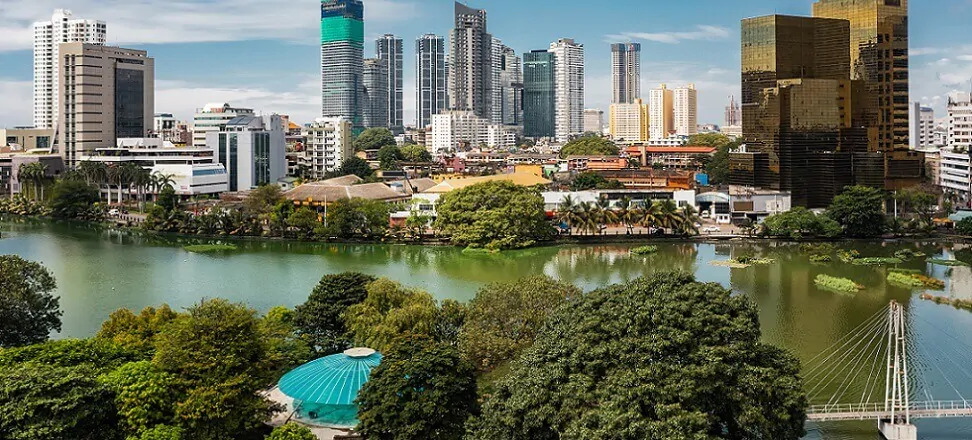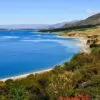From the world, Issue 18/2024
Sri Lanka fights floods by restoring wetlands
The intensive urban development of Colombo, the former capital of Sri Lanka, has led to severe damage to wetlands that once played a key role in protecting the city from floods. It is estimated that over the past 30 years Colombo has lost approx. 40 percent. its wetlands, which significantly increased both the frequency and magnitude of floods. With the disappearance of natural water barriers, the city began to face the severe consequences of heavy downpours on a regular basis.
In the face of these challenges, it became necessary to find solutions that could restore the area’s natural protective systems. The answer turned out to be innovative wetland restoration programs that not only allowed them to regain their water retention capacity, but also effectively reduced the risk of flooding.
Urbanization and degradation of wetlands
Urban sprawl in Sri Lanka, especially after the end of the years-long civil war in 2009, has had a devastating impact on local ecosystems. Between 2010 and 2014, Colombo experienced intensive urban growth, resulting in many of the wetlands around it being drained and transformed into new housing developments. It is estimated that over the past 30 years approx. 40 percent of them have disappeared due to the direct and indirect effects of urbanization.
These natural buffers, which once protected the city from the effects of excessive rainfall, have been transformed into, among other things, illegal dumps, polluted by both municipal and industrial waste. And Colombo, stripped of its natural protective systems, has begun to struggle with increasingly frequent flooding.
Flooding and the need for comprehensive wetland management
The degradation and disappearance of Colombo’s wetlands has contributed significantly to the increased frequency of floods in the region. The lack of natural water barriers that previously protected the city from the effects of heavy rainfall has become more pronounced with each passing year. Between 2010 and 2020, Sri Lanka’s former capital repeatedly faced severe floods, which caused massive damage to infrastructure and resulted in serious property and health losses. Destroyed homes, flooded neighborhoods and the dangers of flood waters full of pollutants and pathogens forced the authorities to take decisive action.
Sri Lanka’s Ministry of Disaster Management stresses that floods are one of the main causes of property loss and damage to agricultural land in the country. Studies show that the problem is growing, and in the Colombo region alone, floods have affected more than 1.5 million people over the past 40 years, with most of the catastrophic events occurring in the last decade. A major flood in 2017 killed more than 200 people, displaced 500,000. and the destruction of some 2,600 homes. A year earlier, equally intense floods contributed to the deaths of more than 100 people.
In response to the growing threat of flooding, the Sri Lankan government, in partnership with the World Bank, has introduced integrated wetland restoration programs that combine environmental engineering with public education. A key component of these efforts has been restoring the ecosystems’ ability to absorb excess rainwater, while improving their ecological health by removing waste and pollution. Colombo, thanks to these initiatives, as of October 2018. is the only wetland city in South Asia covered by the Ramsar Convention, that is, recognizing wetlands as a key element in the protection of global biodiversity.
Wetlands revitalization
One of Colombo’s flagship revitalization projects has been the transformation of neglected and polluted wetlands into urban ecological parks. Examples of such efforts include Diyasaru Park, spanning 60 hectares, and the newly opened Gothatuwa Park. These spaces, formerly used as illegal garbage dumps, have undergone a metamorphosis and become green oases in the heart of the city. Thanks to the revitalization, these wetlands have regained their water retention capacity, significantly reducing the risk of flooding in the surrounding neighborhoods.
These parks serve not only ecological functions, but also social and educational ones. More than 80 species of birds, various species of butterflies and aquatic creatures can be admired in Diyasar, which returned here after the restoration of ecological balance. The parks have become places of recreation for local residents – educational tours, cultural events and environmental awareness activities are organized there.

Local initiatives to protect wetlands
The revitalization of Colombo’s wetlands would not have been possible without the active involvement of local communities. Grassroots initiatives such as the following have played a key role in the process. Thalangama Wetland Watch. This organization educates residents about the importance of wetlands and organizes cleanup campaigns to prevent further pollution of wetlands. Working with local authorities and businesses, it raises funds and technical support, enabling more effective efforts to protect endangered ecosystems.
Education is a key element in changing the perception of wetlands among Colombo residents. Until a dozen years ago, they were considered wastelands, dangerous and undeveloped places. Today, thanks to public campaigns and school tours, more and more people understand how important they are to the ecosystem, water management and public health. Students visiting urban parks such as Diyasaru are learning about biodiversity and the role wetlands play in combating climate change.
The future of wetland conservation in Sri Lanka
Despite many successes in wetland revitalization, the situation remains serious. It is estimated that the country continues to lose about 1.2 percent of its wetlands each year due to illegal dumping, pollution and irresponsible urbanization. To counteract this, the government is planning further investments in green infrastructure, which aims to combine innovative engineering technologies with natural environmental protection methods.

 Polski
Polski







